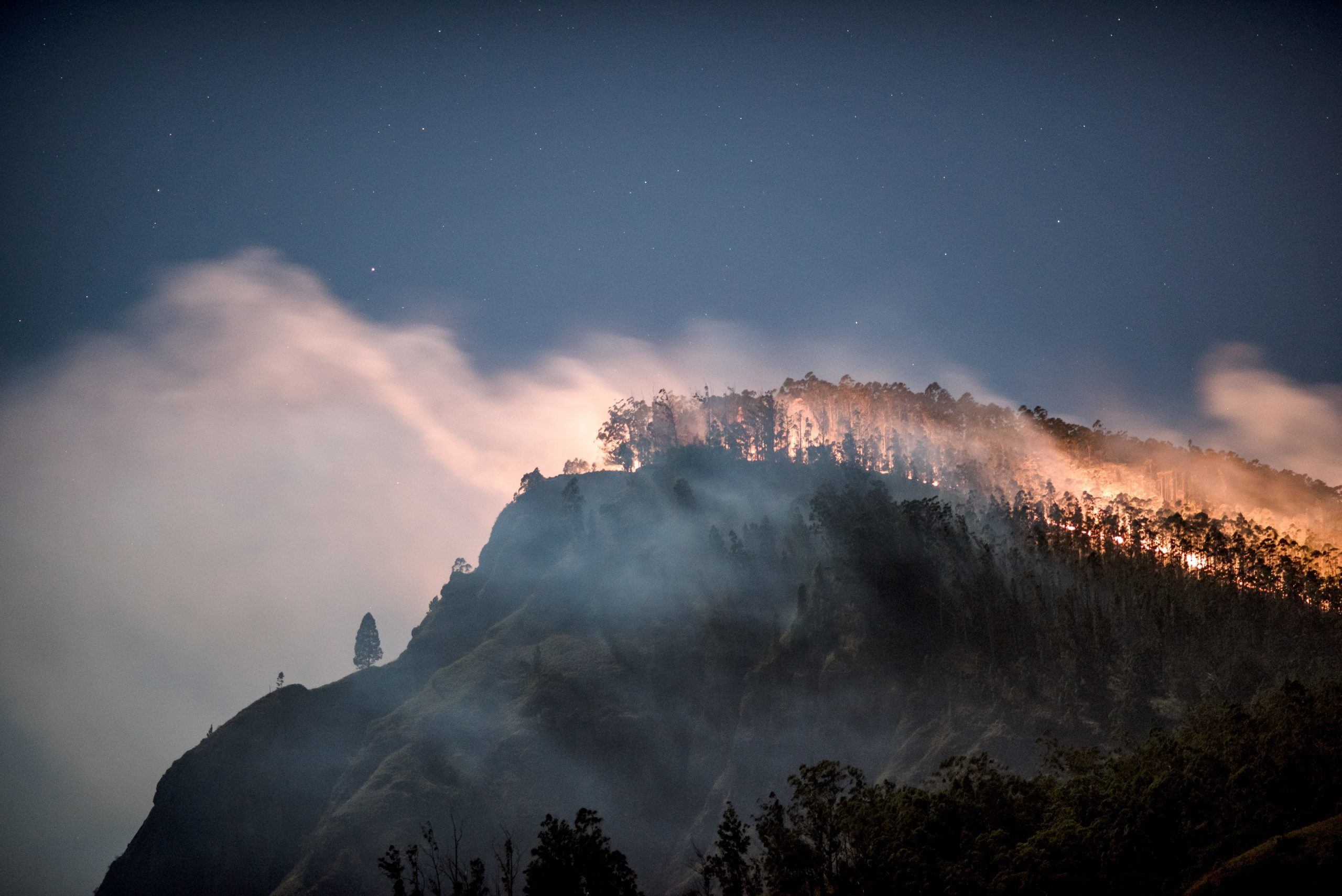Wildfire Smoke: Not just for California anymore
Historically most wildfires happened between May and October, and USDA Forest Service employees were traditionally trained knowing that the four months of June, July, August and September have the worst risk. However, now the Forest Service is shifting to the concept of a fire year. Because winter snows are melting earlier and rains are coming later in the fall, it’s a sad reality that fires in the winter months are becoming the norm and there is no longer a “season” for wildfires anymore. Localities change, too: as of the time of writing this post in early March 2022, there were more than a dozen fires burning in Oklahoma.
Even if you don’t live in an area directly threatened by fire, wildfires can be devastating to your air quality, just like second-hand smoke. Air currents can carry the smoke up to thousands of miles away, affecting millions. According to the EPA, “Smoke is made up of a complex mixture of gases and fine particles produced when wood and other organic materials burn. The biggest health threat from smoke is from fine particles. These microscopic particles can penetrate deep into your lungs. They can cause a range of health problems, from burning eyes and a runny nose to aggravated chronic heart and lung diseases. Exposure to particle pollution is even linked to premature death.” Yikes!
Here at HypoAir, we get many questions on how to protect indoor air from the pollution of smoke outside. The EPA has excellent suggestions on what to do on this page, most of which need some time to prepare! So as drought conditions in your state or surrounding areas persist, get ready now by doing the following:
- Seal doors and windows with weatherstripping, caulk and door sweeps.
- Find out how to adjust your HVAC system accordingly: you’ll want to close the fresh air intake and change over to recirculation, no matter whether you have central AC, a window air conditioner or portable air conditioner.
- Purchase extra MERV 13 or higher filters for your HVAC system, to be used on poor air quality days (caution: read our post on HVAC filters first, as using a filter with too high MERV rating can damage your system).
- If you live in an apartment building or condo with little control over the HVAC, consider purchasing vent filter material so you can place them in the vents into your space. The filter material can prevent smaller particulates in smoke from entering. Carbon vent filter material will neutralize many VOCs as well.
- Purchase a HEPA air cleaner (non-ozone producing type) and be sure to have an extra filter or two on hand. The use of a HEPA filter will take much of the damaging fine particles out of the air you breathe! During a wildfire or whenever there is bad air quality outside, run the cleaner/purifier on high for an hour and thereafter at "quiet"/medium setting (Wirecutter). You can check out our post on standalone HEPA filters as a purchase guide. If you can't purchase one, make one: there are many videos and instructionals online for DIY air cleaners; most only require one or more filters, a box fan, and some cardboard and tape.
- Keep a stash of N95 respirator masks on hand. These are a good source of protection if you have to go outside, or if power is cut to your home and indoor air quality gets bad as well. The “95” means it blocks out 95% of particulates.
- Keep canned and non-perishable food on hand, so that you don’t have to cook during periods of bad air quality. Cooking indoors increases small particulates and vapors in the air, and you won’t want to turn on your stove exhaust, as that will draw polluted outdoor air into the house.
- If air quality is very poor (check next point), you’ll want to evacuate to a place with clean, filtered air, like indoor malls, libraries, community centers, civic centers and local government buildings (sfgate.com).
- Check your local air quality and receive updates from airnow.gov . Fire and smoke maps are available under the heading fire.airnow.gov . Using an Air Quality Index (AQI) as a measuring tool ranging from 0-500, your local forecast and larger maps can be color coded to show whether an area is good (green), moderate (yellow), unhealthy for sensitive groups (orange), unhealthy (red), very unhealthy (purple), and hazardous (maroon).
Photo by Tobias Seidl on Unsplash

